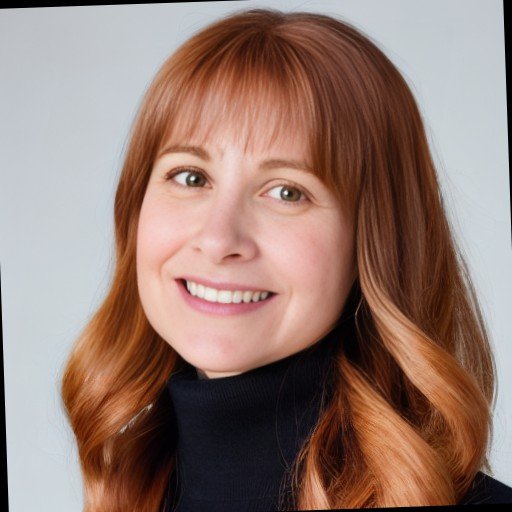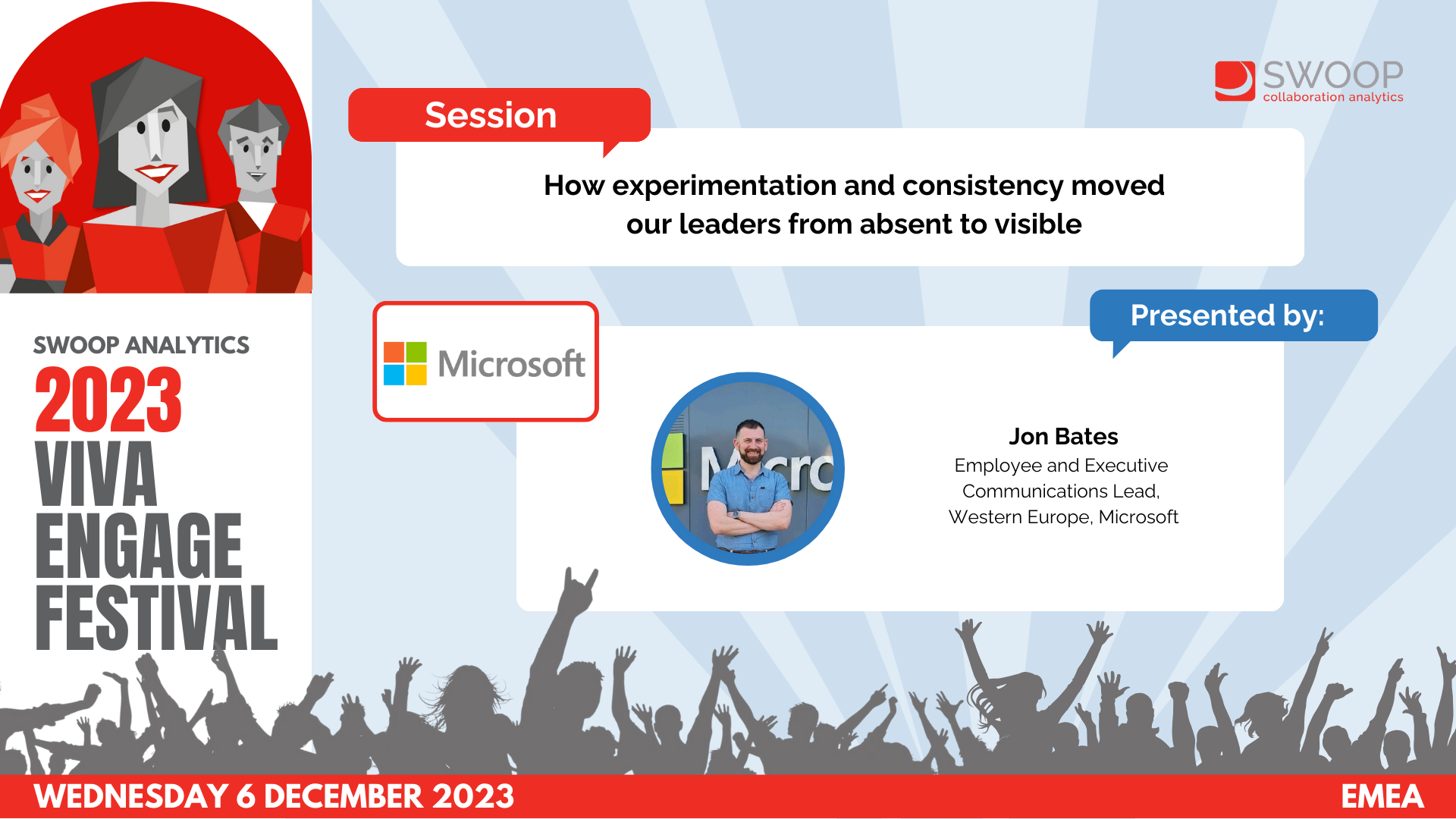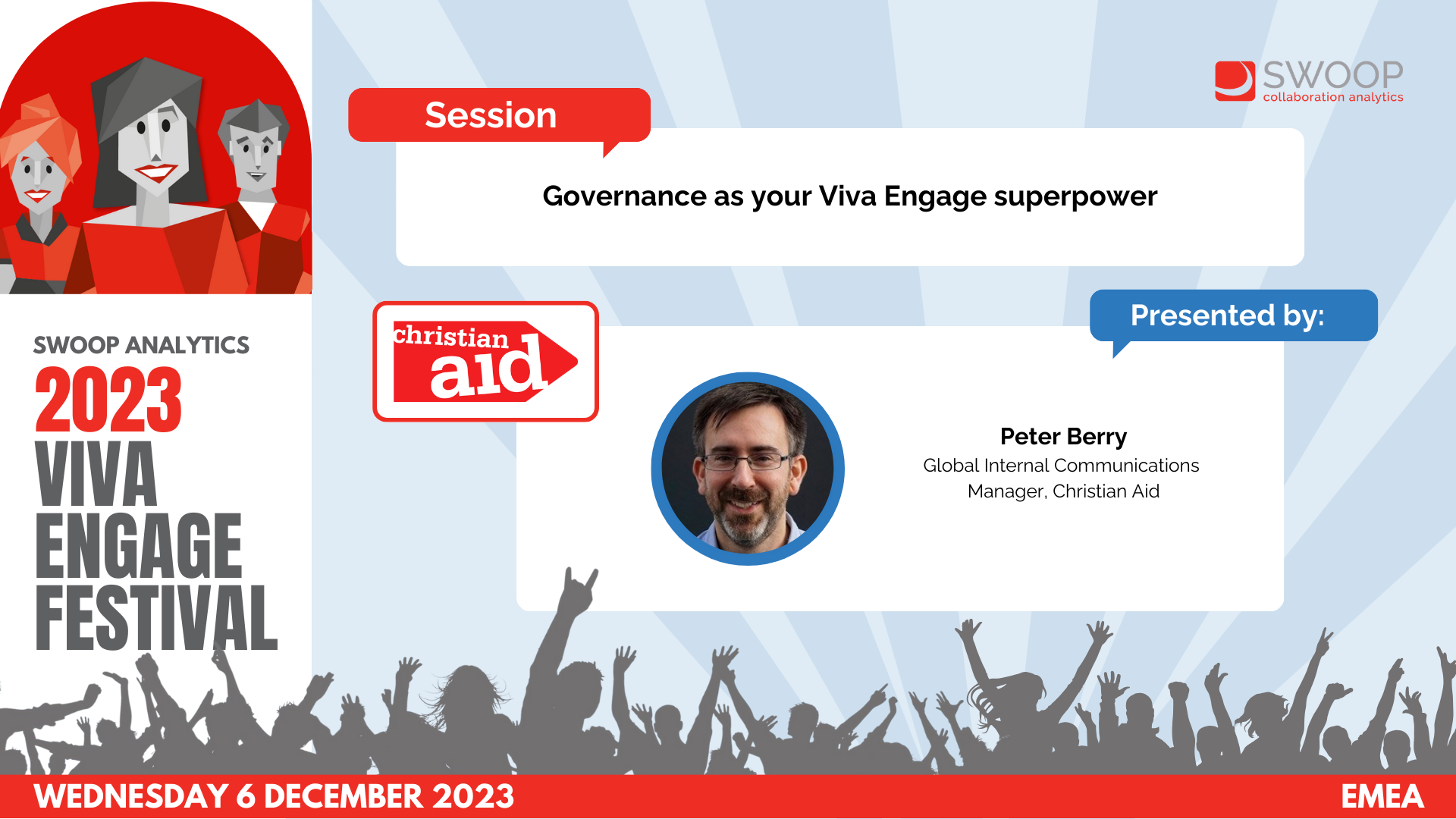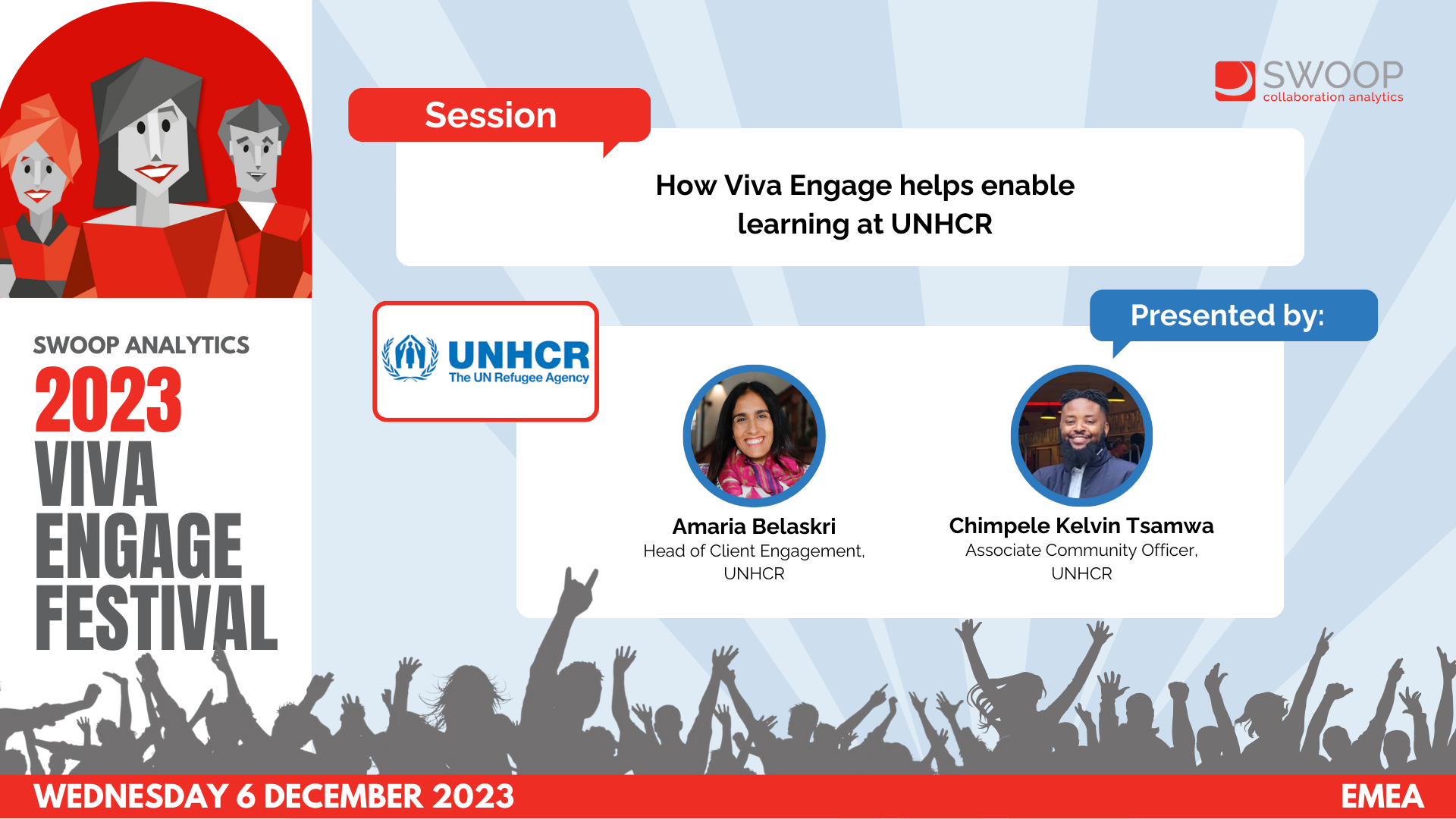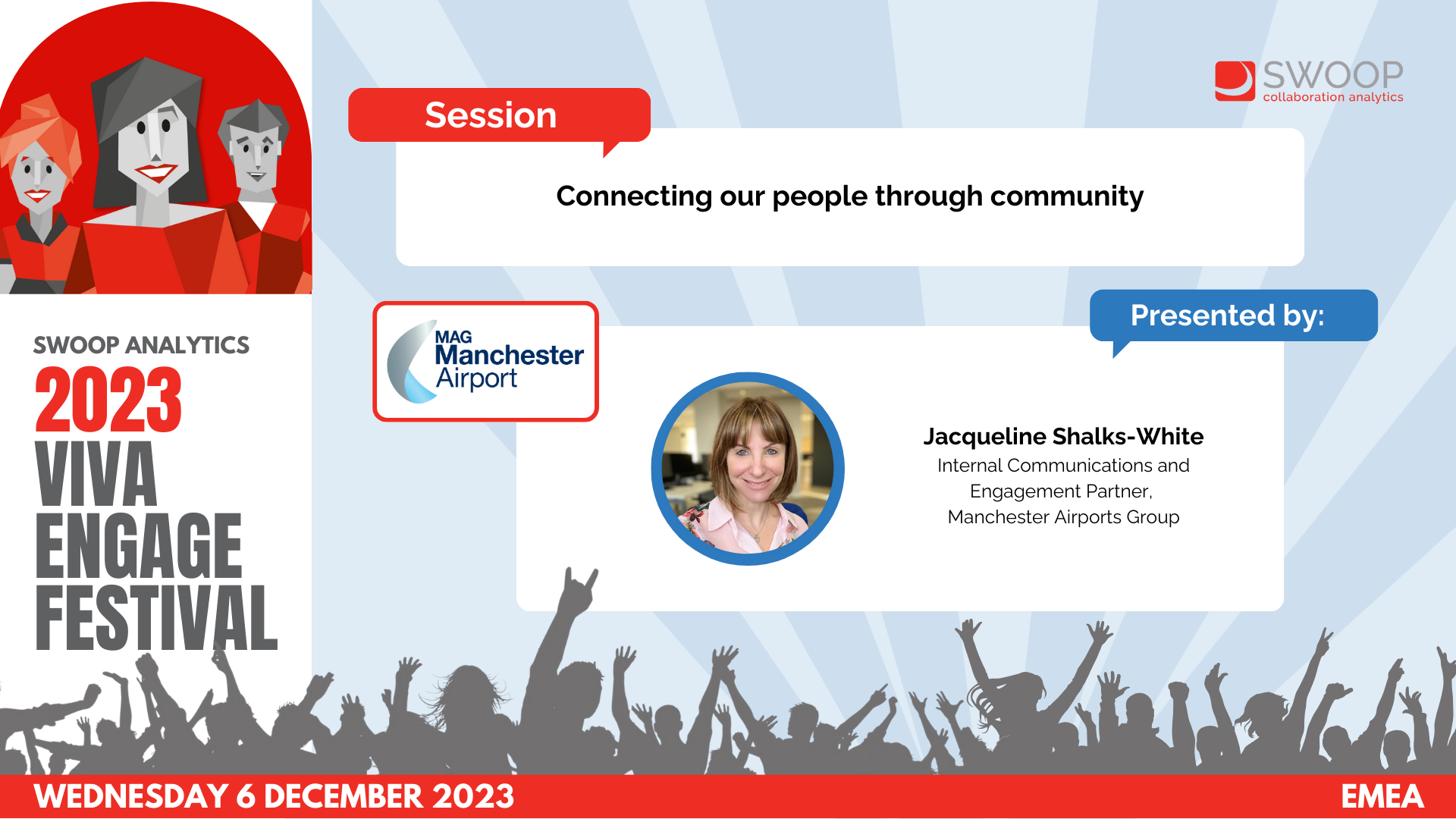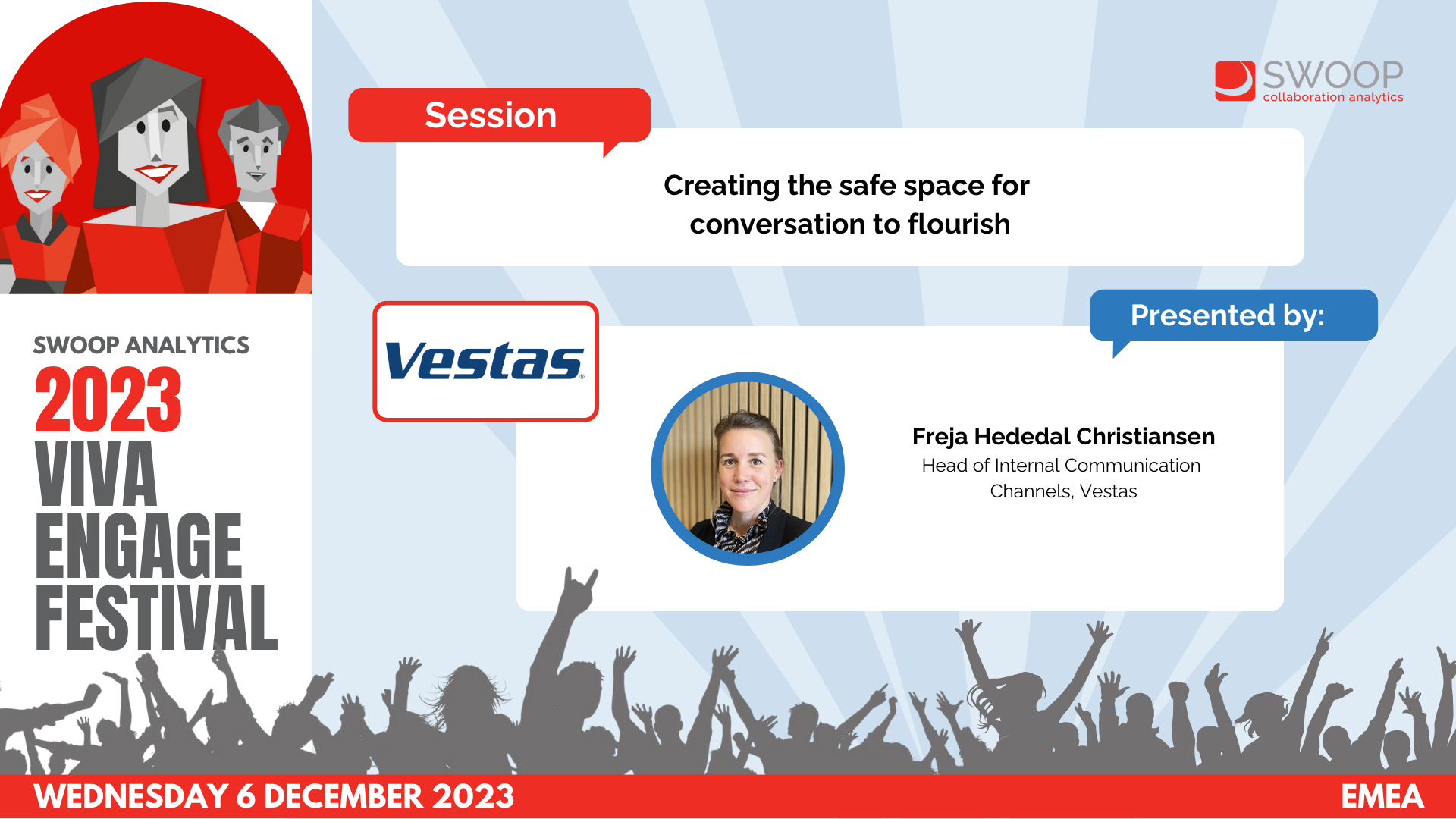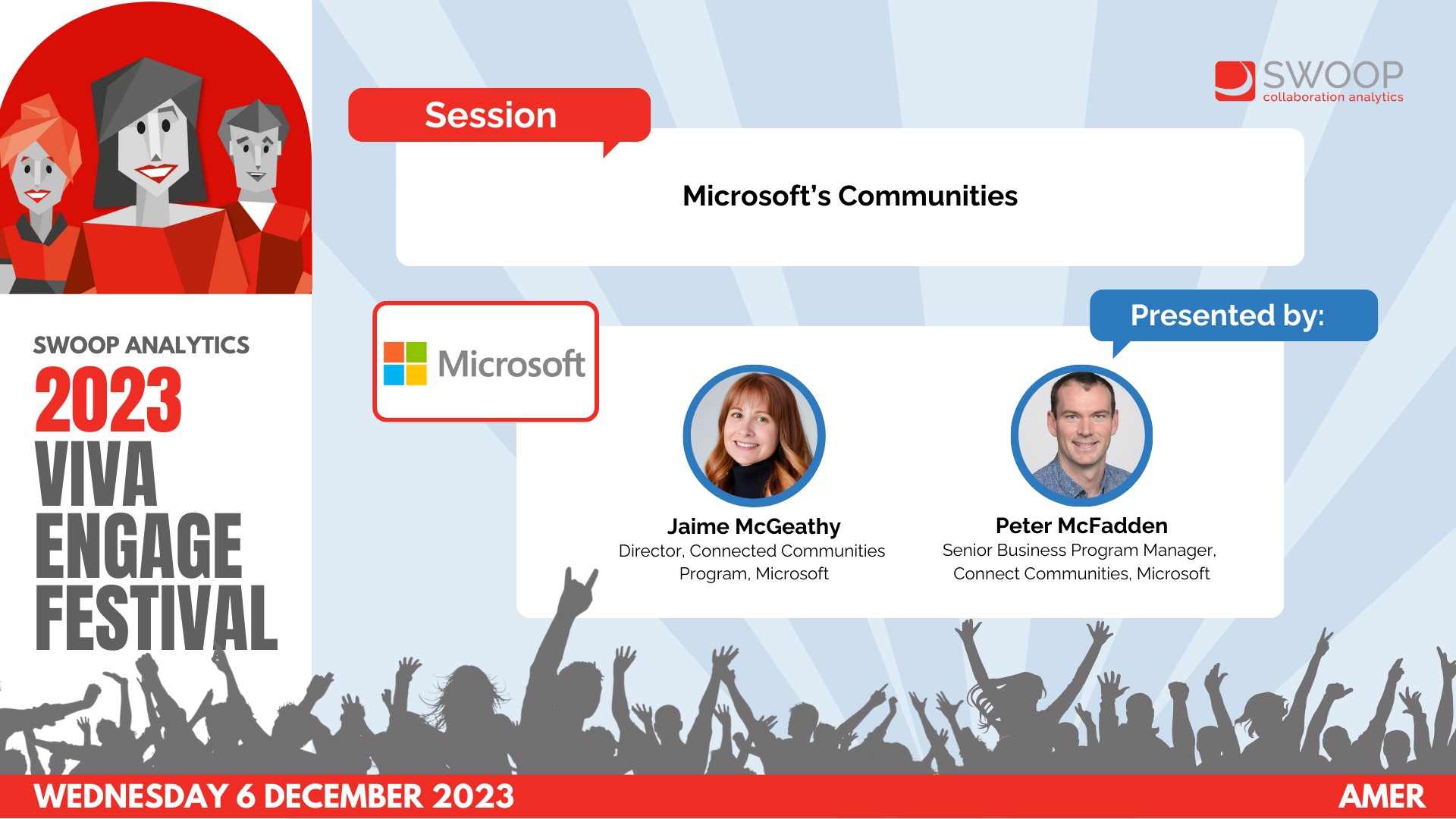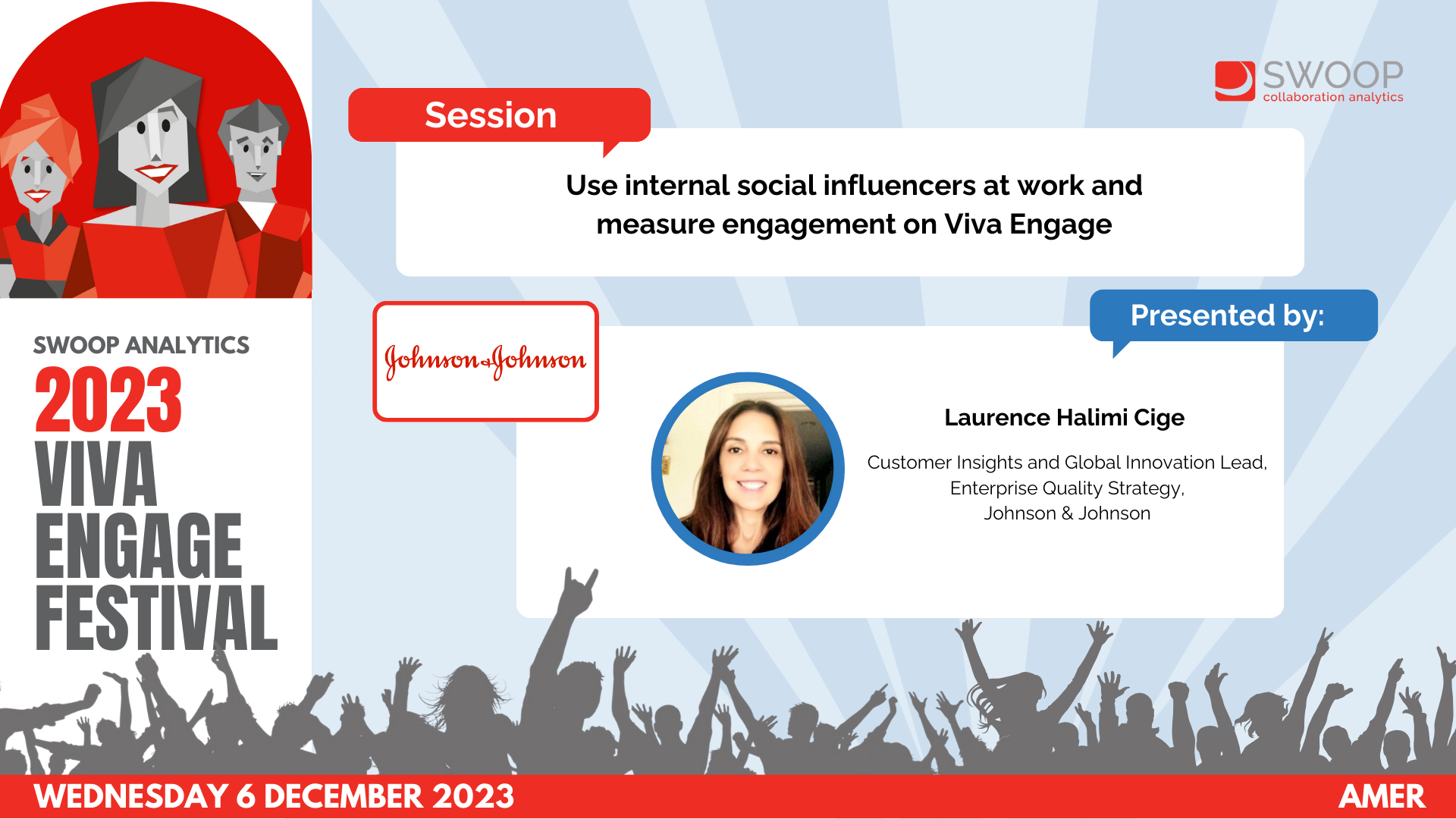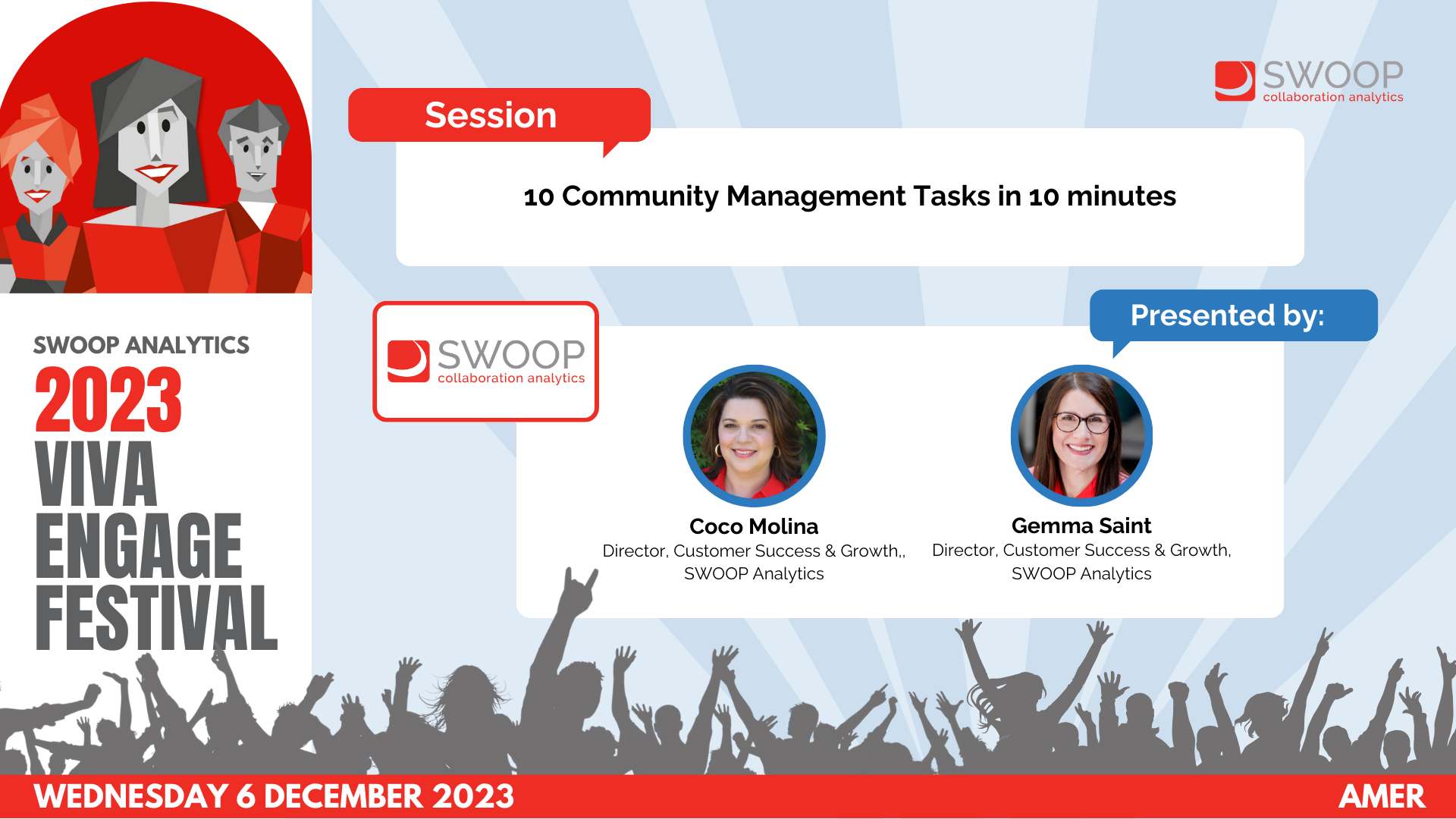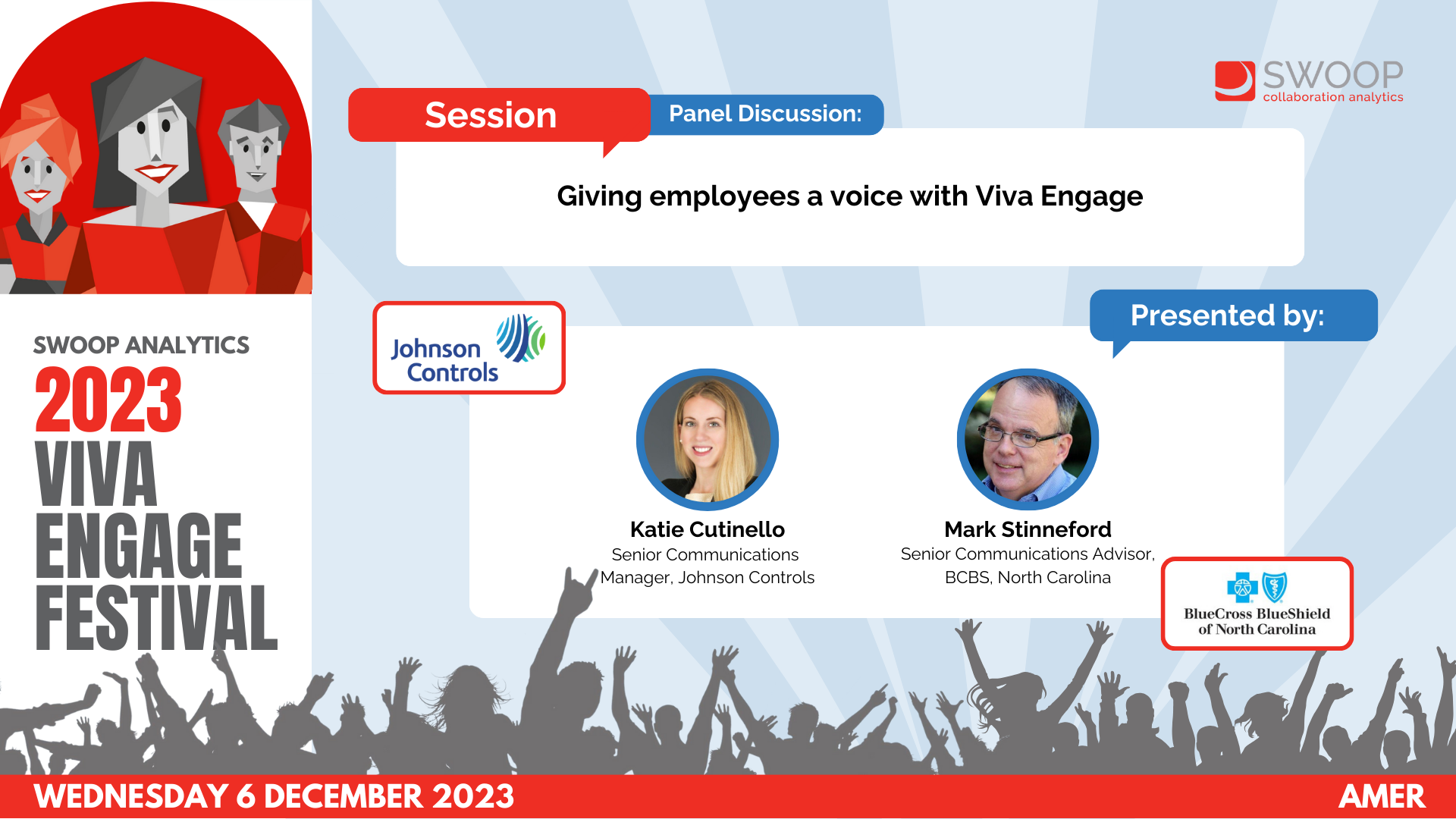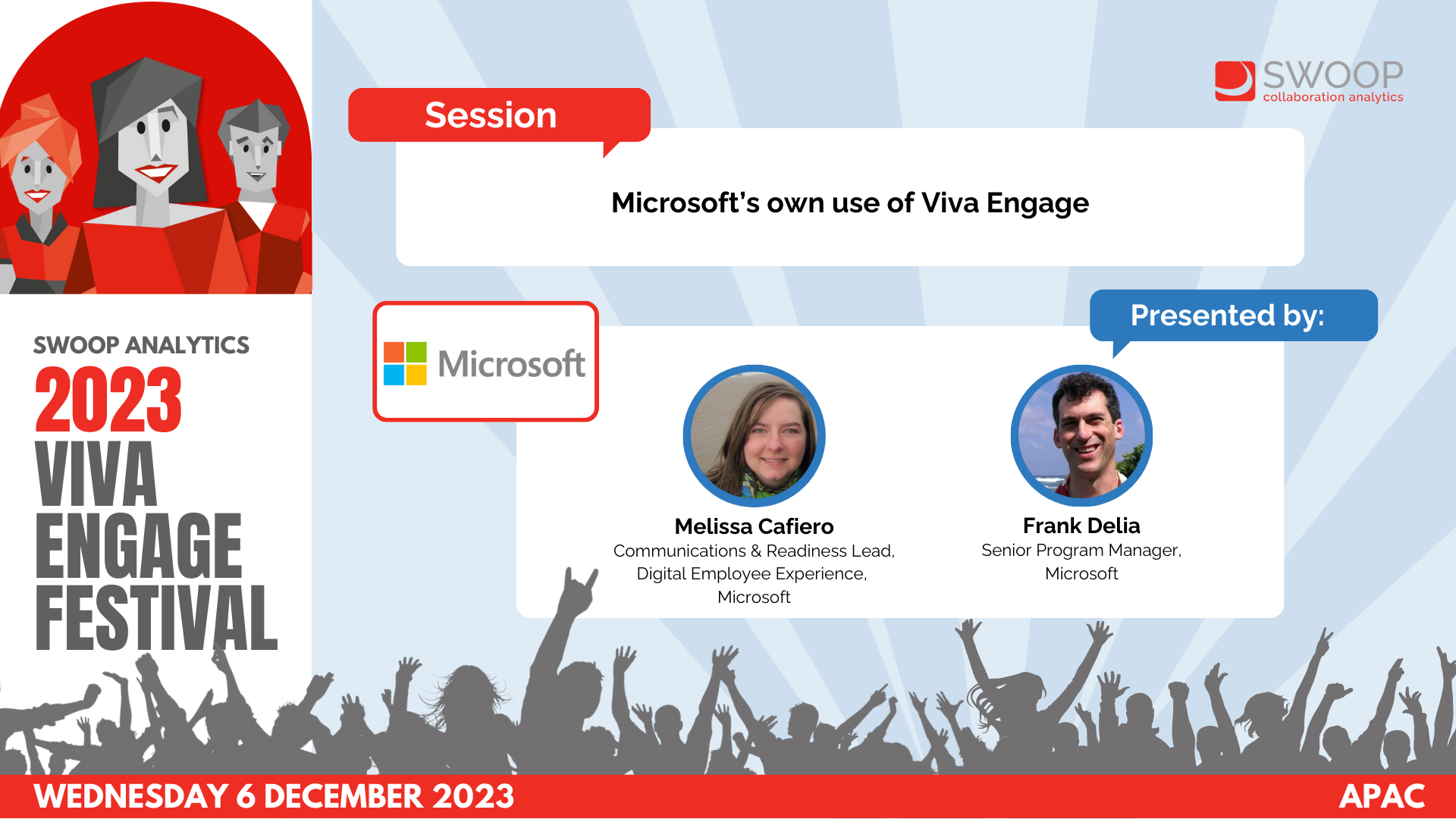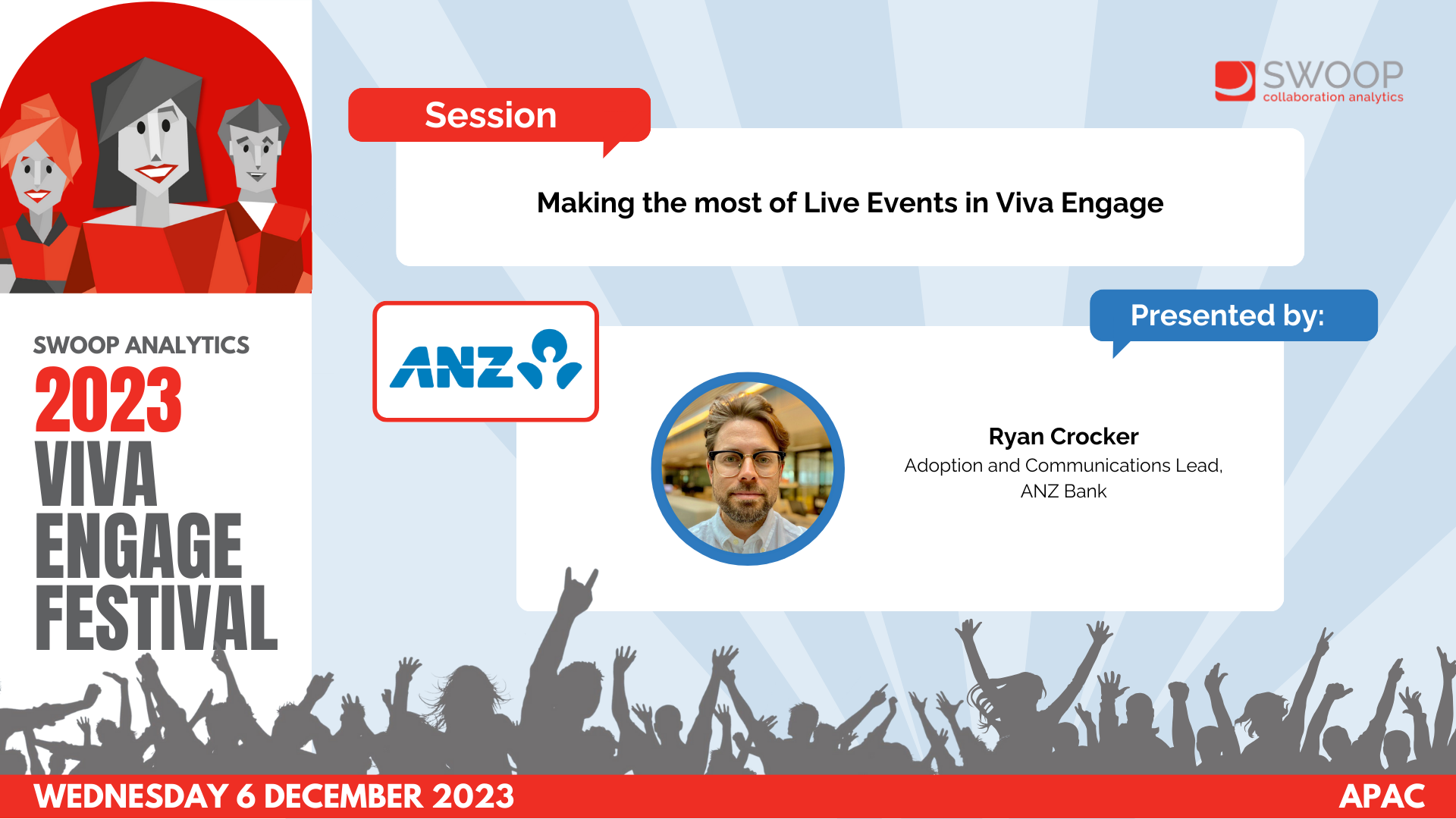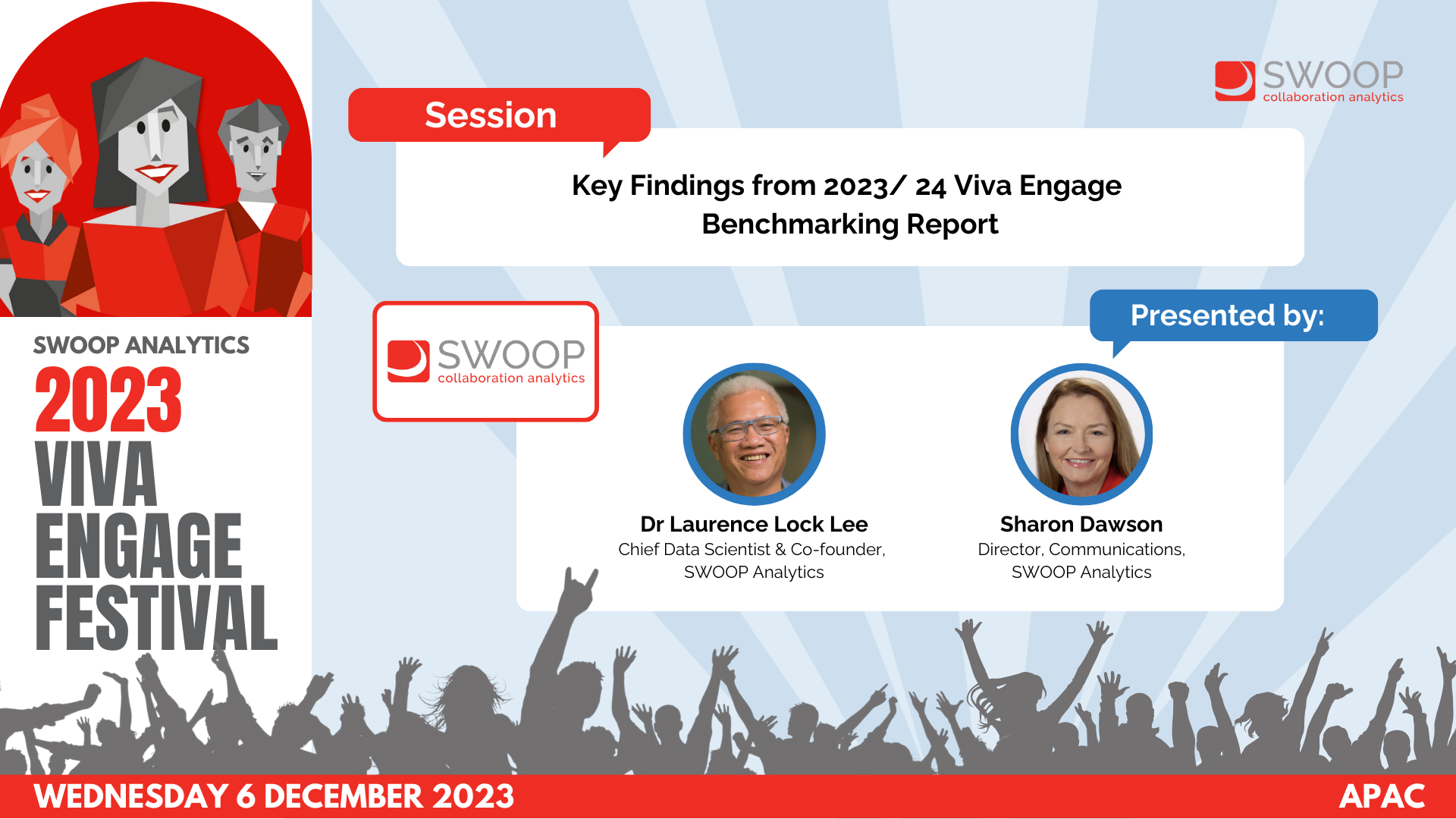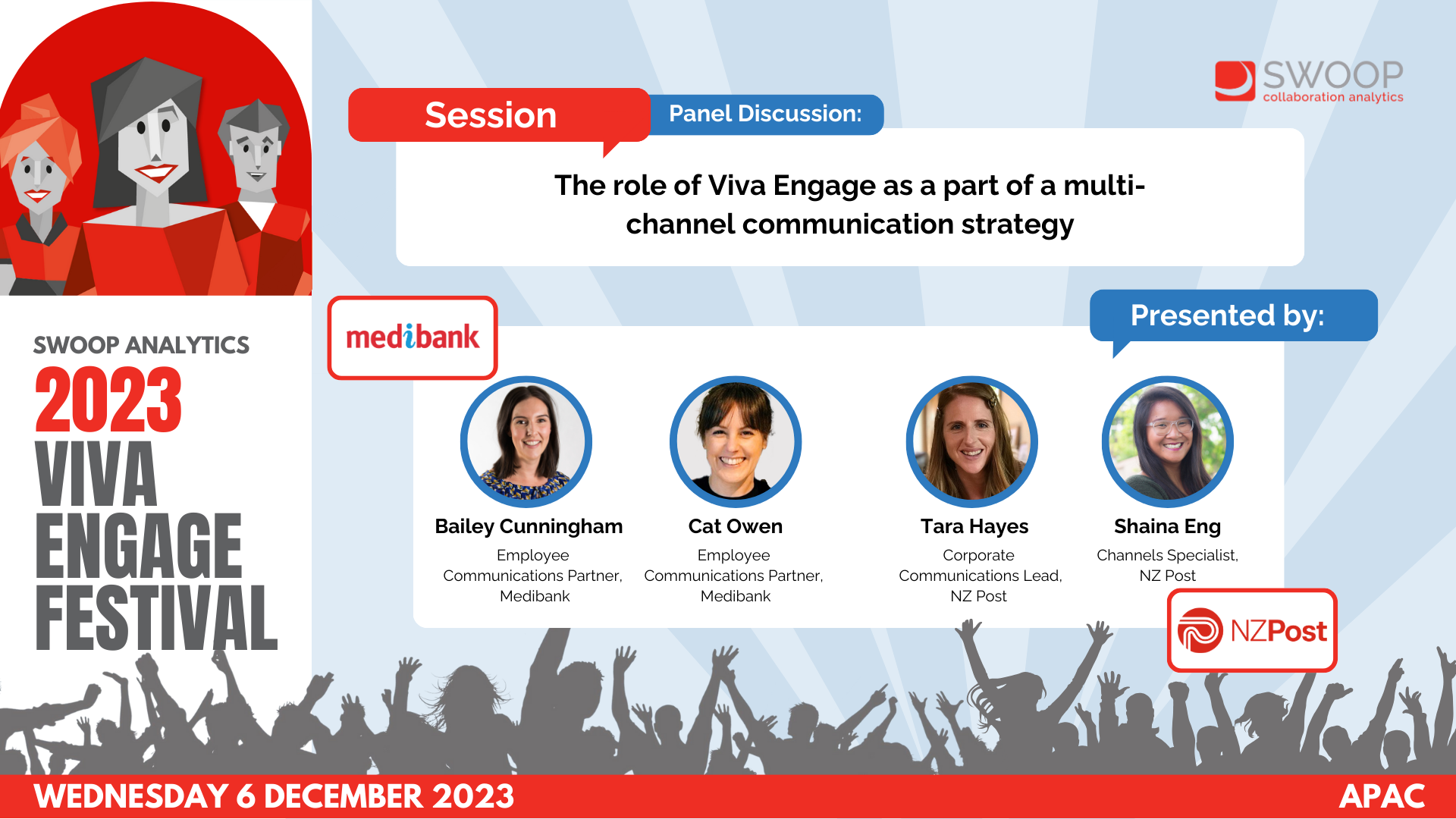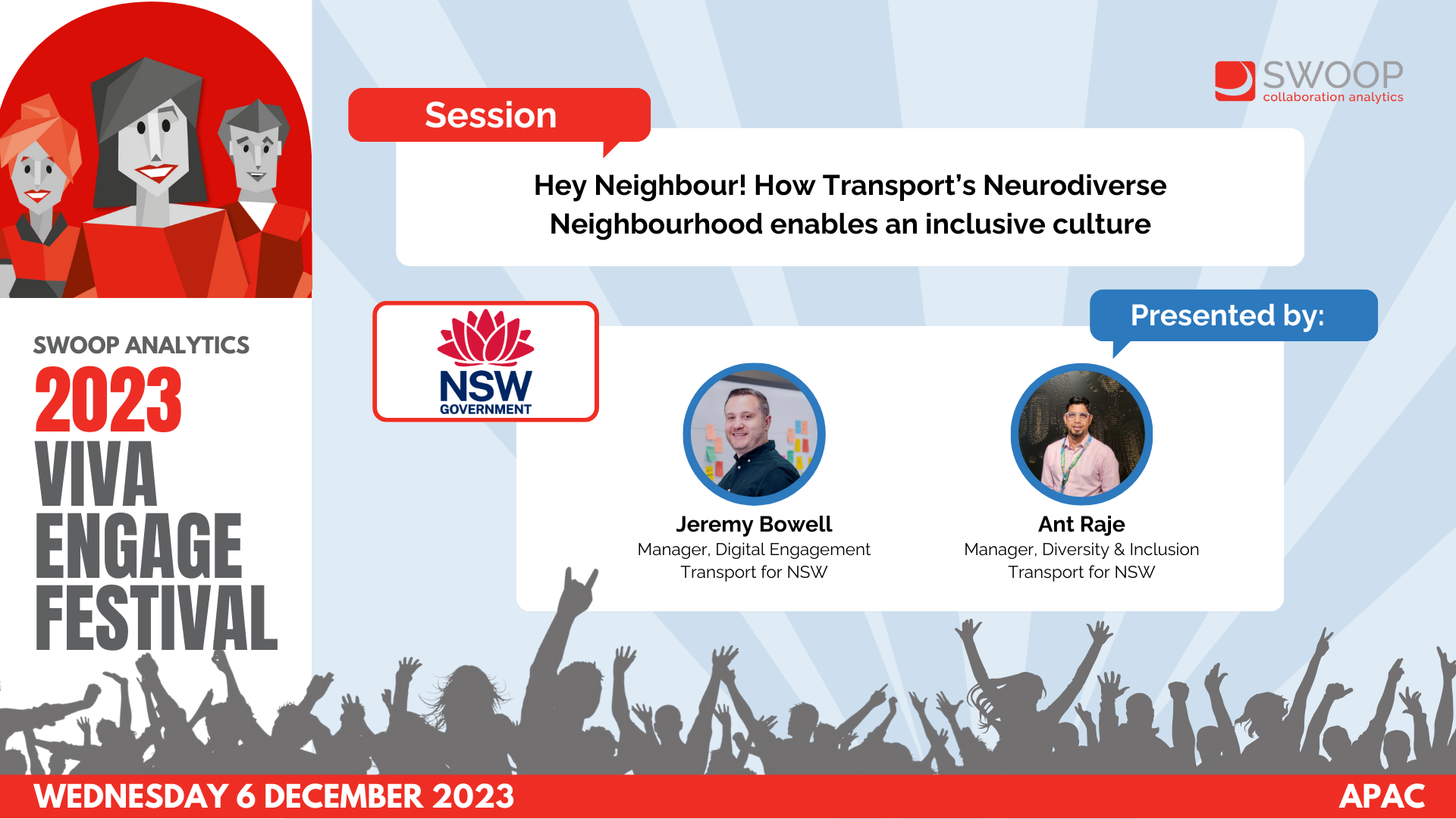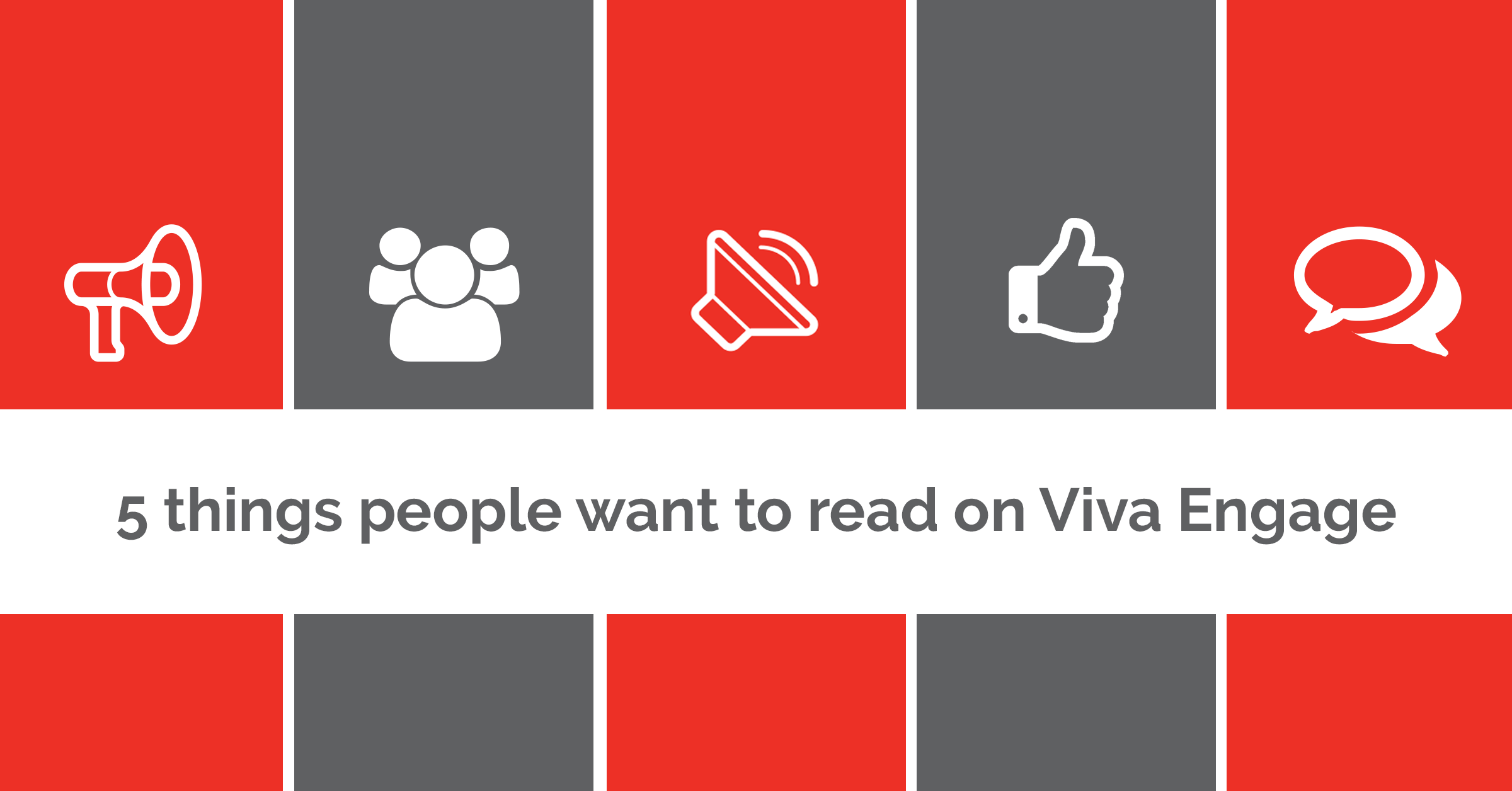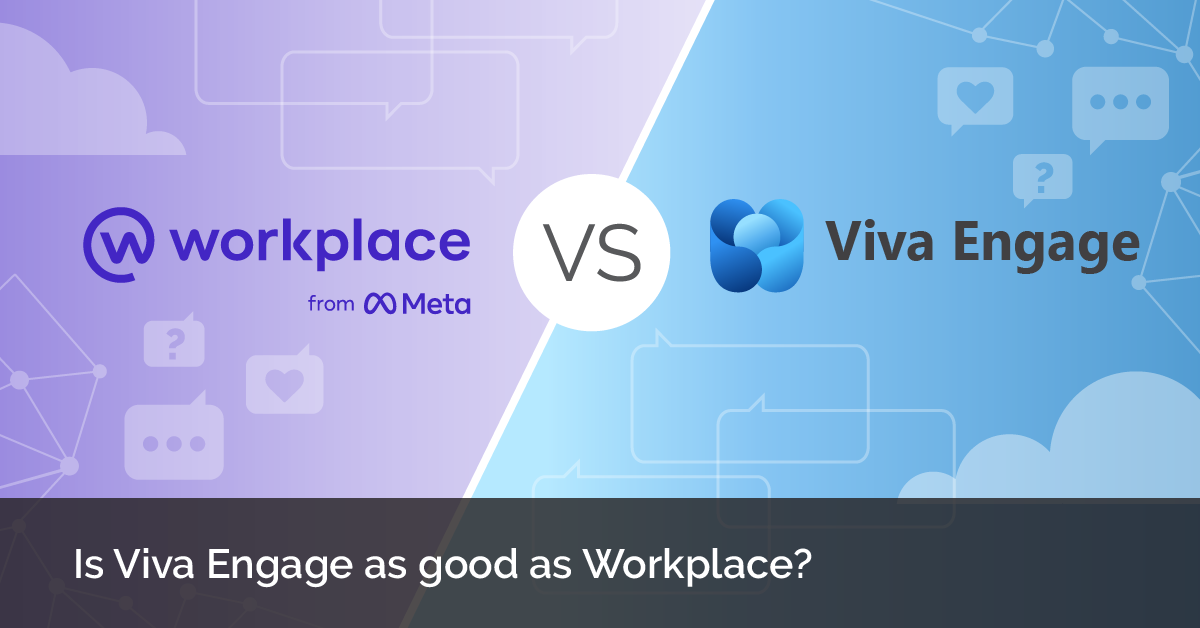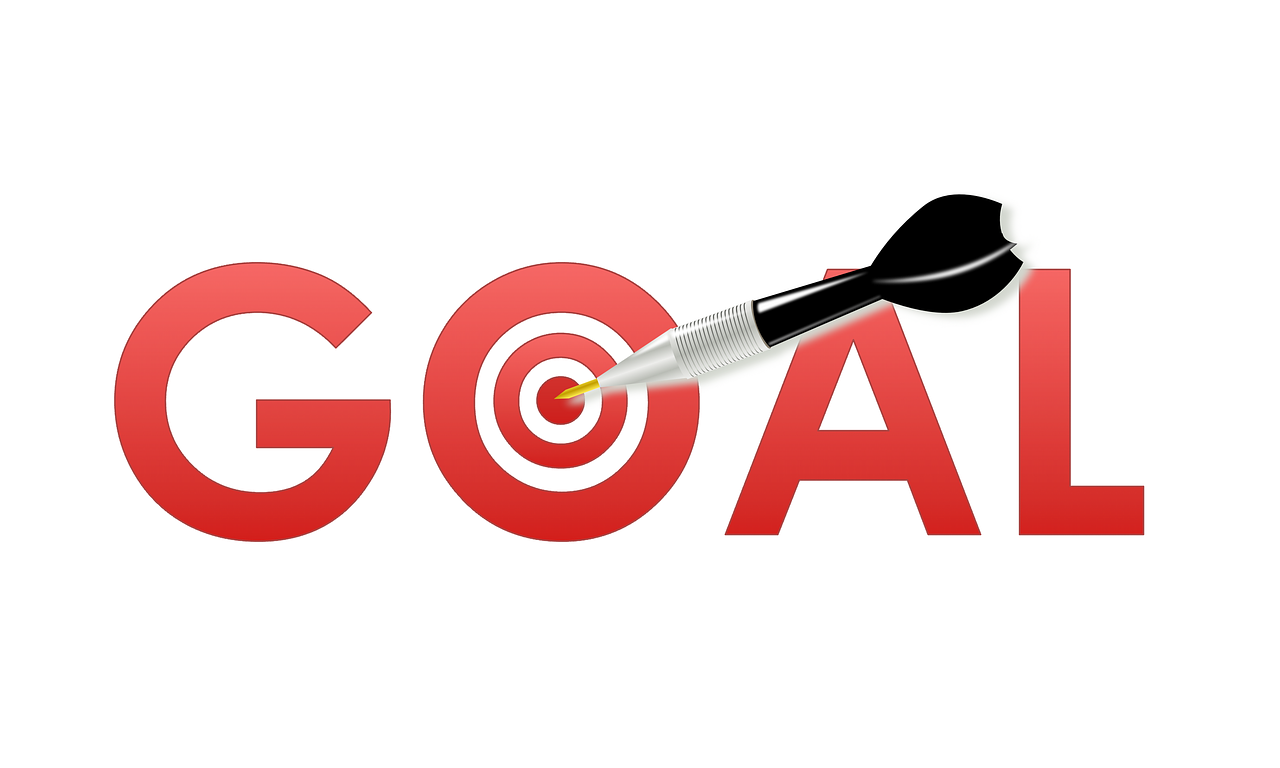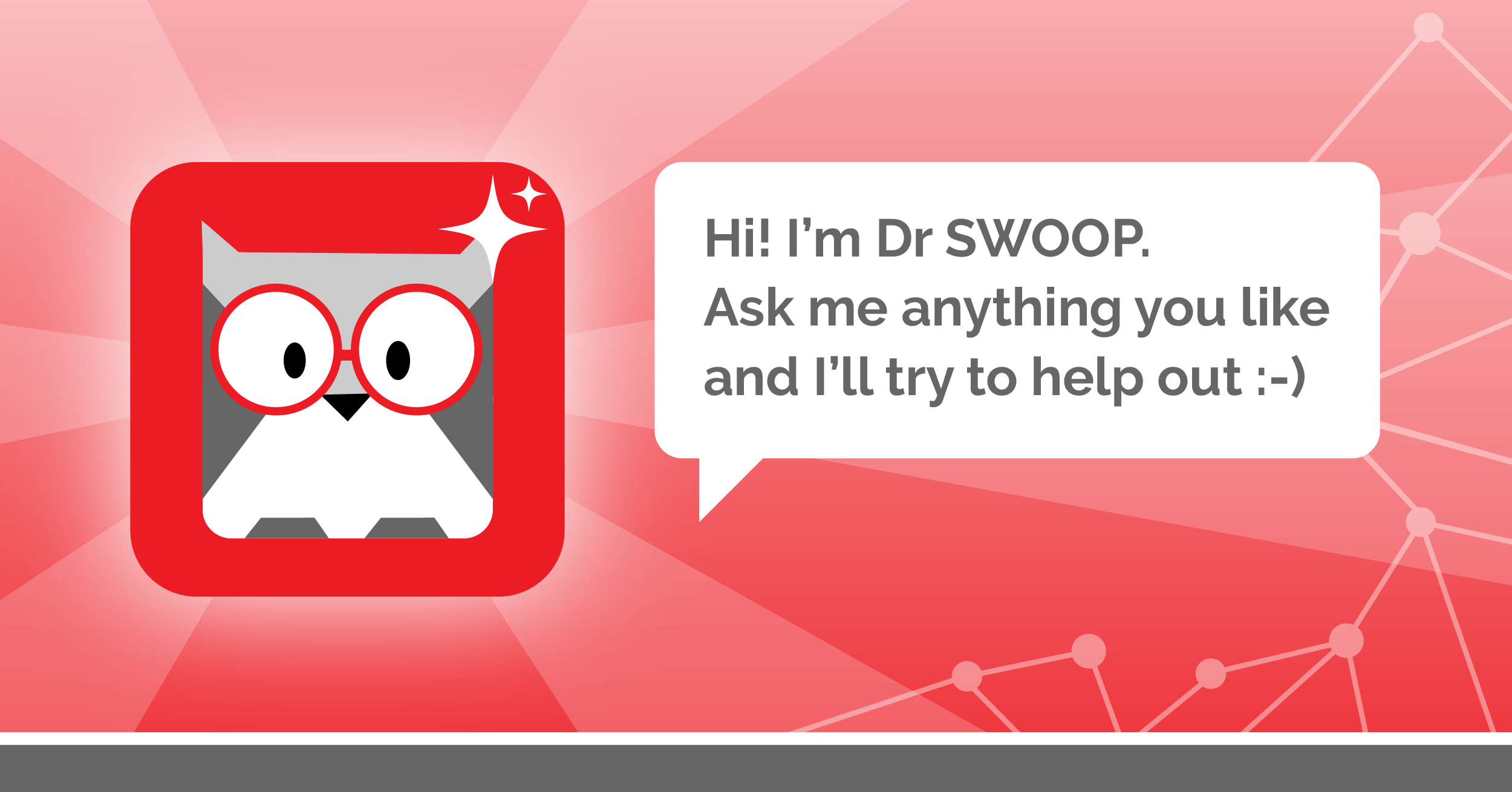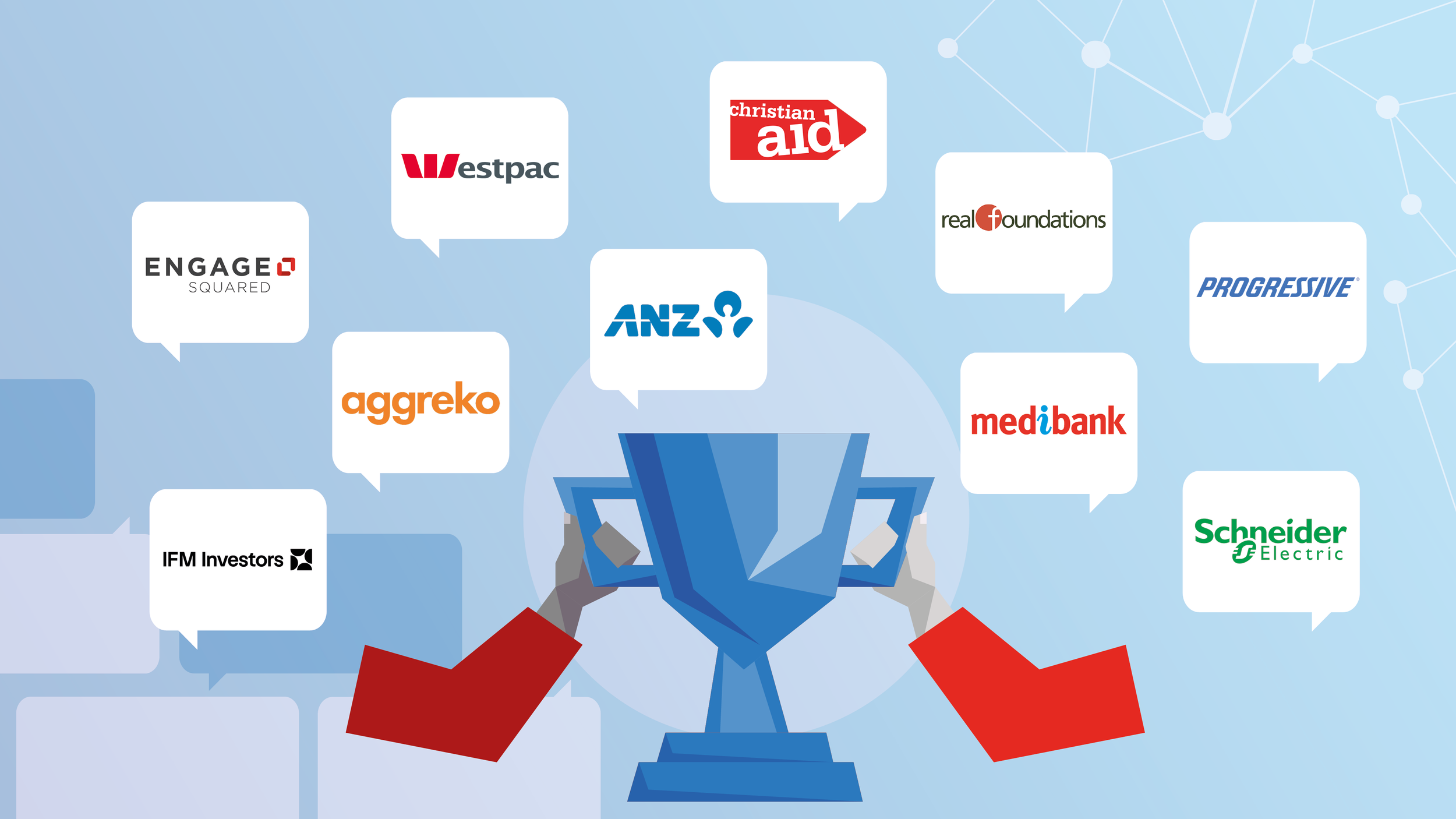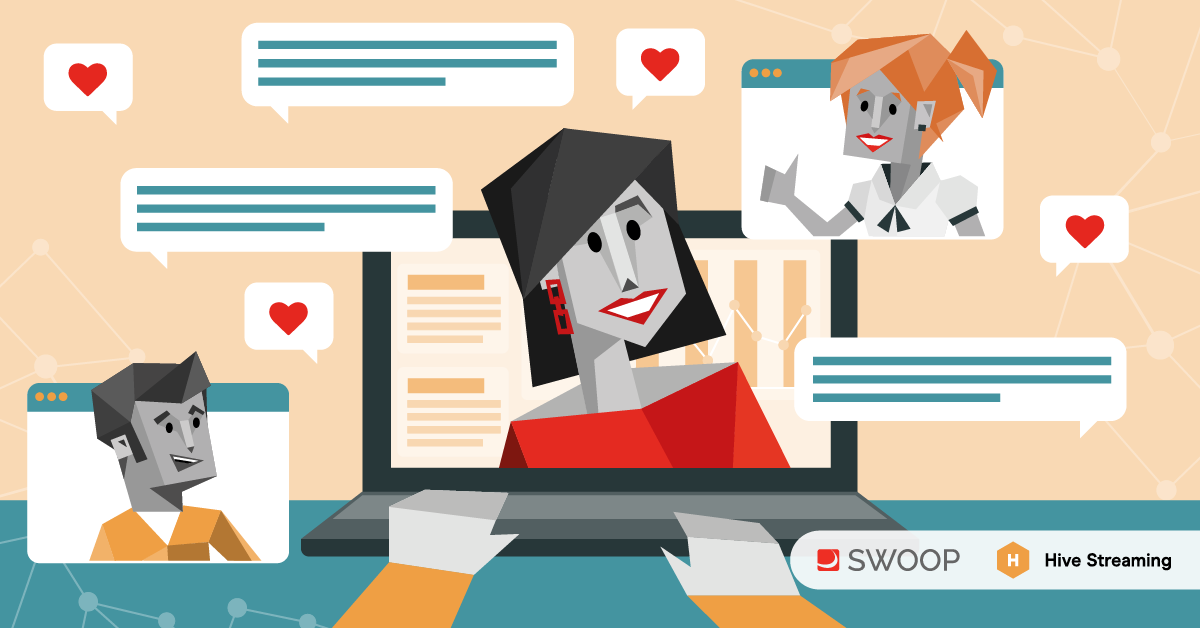Microsoft: Microsoft Communities
AMER | Viva Engage Festival 2023
The Connected Communities program is the largest internal community of practice program at Microsoft, helping nearly 60,000 employees across 75 communities to connect, share, and grow their skills to help our customers. Learn more about Connected Communities and how it uses Viva Engage to empower employees to achieve more.
-
Well, thanks everybody for being here. Jamie and I are going to talk today about our Connected Communities Program and in particular how we connect people across our business and support customers and how Viva Engage plays a really important role in that. And so we'll start off with some introductions for everybody.
So my name is Pete McFadden. I'm a Senior Business Program Manager in the Connected Communities Program at Microsoft. I'm based in San Francisco and I've been with the team for a little over three and a half years now.
So today we're going to talk through some of the aspects of our program as the largest community of practice program at Microsoft. And so looking forward to sharing that with everybody today. But Jamie, I'll pass it over to you for a quick introduction.
So my name is Jamie McGeathy. It's nice to meet you all. I'm a Director with the Connected Communities Program based out of Minnesota in the United States.
I've been in the communities of practice space for a bit over a decade now, and I just love this topic and everything about communities. So very excited to be here today. Thanks, Jamie.
Oh, Jamie, you've got your hand up. Perfect. Thank you.
We essentially, communities of practice in particular, connected communities at Microsoft, we largely exist with a focus on connecting across silos. So I've heard some of the fantastic presentations today. It seems to be a common theme at Microsoft.
We have around 220,000 employees worldwide. And so one of our challenges just with that kind of volume of people who are dispersed across different orgs, roles, geographies and kind of work locations around the world, almost inevitably conversations begin to happen within silos. And sometimes that's actually OK and it's absolutely an important part of business.
But sometimes knowledge can kind of get stuck in those spaces. And so we need to find a way that we can bridge some of those gaps and help to bring down some of those walls that might deliberately or accidentally start to emerge. And so Connected Communities as a program was designed to help to bridge those silos.
So we use Viva Engage as our core platform to help to break down some of the communications barriers that can exist in that space with that bigger goal of essentially trying to exist to bring together people from all different roles, organizations within the company and geographies from all around the world as well. So for us, we are a managed program. We have 60,000 Microsoft employees, all internal within our program itself.
And we align to kind of four strategic pillars, which you can see in the slide there. I see some surprised reactions. It's a big company and a big program.
And so these are the kind of four strategic pillars that we try to align with as a program ourselves. So the first one being connection, we kind of align to our customer priorities within Microsoft. And again, I mentioned that earlier, but we are completely open to anyone at Microsoft being able to join these from different roles, organizations, geographies, but all centered around those customer priorities.
And so an important part of that is it kind of provides stability. At a company like Microsoft, there's always change. We're always evolving.
There's new technology. There's new things coming out. And the communities provide a space where there can be kind of stability around where to go to connect to that knowledge and expertise and to help to break down barriers even when they emerge.
Our second pillar, which you'll see there, is around growth. So we are a communities of practice program, as I mentioned. And a big focus of what we do is around growing skills and perspectives through social learning.
So again, we try to augment that kind of formal learning experience, which is an incredibly important part of our company and what each of our communities do. But we also provide that space where people can come together, connect to knowledge and expertise, and do that in a kind of safe and encouraging space. And so again, as I mentioned earlier, with so much of our technology always evolving, always new facets and elements coming into that space, the communities provide a space where people can get together and learn and support each other in that kind of social learning environment and grow their knowledge and expertise as one Microsoft, as we like to say in the Microsoft side.
Our third pillar is around leadership. So we have over 1,100 volunteers that are part of our program, volunteering their knowledge and expertise to be leads, an engagement lead within our program. And I'll dig a little bit more into that soon.
But they represent different parts of the business, again, coming from different roles, orgs, geographies, etc. And it gives them a space where they can kind of build practical leadership. So even beyond their day job, this provides a space where they can kind of build out their reputation, their skills around leadership or different parts of the program.
And we offer kind of coaching and targeted skills development to kind of complement that as they learn and grow in that space as well. And then the final pillar there is around influence. So we are fortunate to be, I guess, one of Microsoft's first customers, being from Microsoft ourselves.
And we support pilots as the product team comes out with new concepts and ideas and features. And we also are fortunate to be able to partner with the product group to give our own perspective and provide feedback on what's working and different ways in which the product can continue to evolve, which is really exciting. So for us, what that looks like, again, we are aligned to the community, to the business outcomes and strategy.
And that means for us, we have about 75 communities across our program that align to three main functional areas, if you will. And so the first one being solution areas, examples that some of you might have heard of. But at Microsoft, we have solution areas called modern work, security and a number of others.
We then have industry aligned communities around banking, retailers, energy, different things like that, and communities that align to those. And then we have cross-functional communities that kind of span the business and the adoption and change management, accessibility, and things like that. And so each of our communities align into that space.
But really, we're about aligning people and processes. And so our program is very focused around people. We have processes that enable the success of our communities and the people within that space and our members.
But all of that is kind of enabled by technology. So platforms, very much like Viva Engage, being a critical piece of that puzzle, make the whole kind of story come together and as impactful and powerful for our members as possible. And so on the people side, when it comes to the leadership in our communities, that is very heavily driven by volunteers.
We're fortunate, as I said, we are a managed program. And so we do have community program managers that are able to partner at scale with a group of communities. And we typically aim for a CPM per 10 communities is our ideal kind of scenario around that space.
But all of our communities have roughly three to five leads. And again, these people are from all different parts of the business. There's no one role.
It can be sales, support, marketing, engineering, product, deliberately trying to get folks from different parts of the business, but also different parts of the world to bring those different perspectives. And they're largely selected around, you know, do you have a passion in this space? Do you have leadership skills and or want to continue to grow those leadership skills that you want to develop in that space? And then we try to where possible, our best practice is that we encourage our leads to recruit other leads as well. So we deliberately moved away.
We don't have any examples in our program where we might just have one lead. And that is because we don't want it to be a funnel or a breakneck for anybody, but where they can kind of share out that leadership space. That's a really important best practice that has emerged over the years as we've been doing this.
Engagement leads typically own a strategy and execute an aspect of the community. So an example might be communications. They might own some communities to a monthly update of a newsletter of some type or a blog post, or they might own a community call and own that aspect within the community.
And then SMEs contribute their knowledge and expertise. So typically they would answer questions. They might lead sessions.
If there are calls, they might contribute articles, different things like that within the community. And the leads are kind of the strategic managers of all of those things, making sure they've got the right pieces in place as well. Some communities do have an executive sponsor and they can appoint a business sponsor to work directly with the community.
Typically that executive sponsor might be a VP or a CVP within the business that for whatever part of the business the community is focused on, they're kind of that overarching business leader that can, and a few people have spoken about it today in different sessions, that can provide their, I guess the weight that they bring as a leader in that space to the community. And then a business sponsor might be someone that the leads have more access to that can help to drive that insight around strategy, where this part of the business is going, what's coming up, roadmap, all those types of things. And so that's what it looks like for us.
Again, this can vary by community to community, but this is as an overview, what's typically, what we typically see successful within our communities themselves. And with that, I'm going to pass over to Jamie to talk about our operating policy. Thank you very much, Pete.
Takeover control here. I can verify that I actually moved the slides for everyone and not just me. Excellent.
So I'm going to talk a bit about some of our processes and at the end have a little sneak peek of some early features that we've been using and how that's been going. So stick around for that. We have a core operating philosophy inside connected communities.
And one of the hearts of that is that all of our communities are elective. Everything is opt in. Our communities don't force anyone to be there.
So when you automatically join the company, you're not like thrown into a community. You do have to choose to be there. So a lot of our growth is word of mouth and where we can market.
We focus on bringing the company together, as Pete mentioned. And one of the core reasons for that is when people collaborate, that's where innovation really happens, particularly when people are hearing about things that are happening and part of the company they might not naturally have exposure to. So that innovation and that collaborative engine is very important to what we do.
Accessibility on here doesn't just mean accessibility from a product standpoint, where we make sure all of our content and all the tools that we use meet full accessibility standards. This also means the program is accessible to anyone inside Microsoft. We have this, I think you mentioned about 70, 75 communities right now.
Only two of them are even limited to full time employees. All the other ones are limited to our vendor staff that are on network plus full time employees. So as long as you're on the Microsoft tenant, you can access this information.
You can meet these networks. You can tap into this knowledge share. And that's really important for us because I mean, we have vendors embedded with our product teams.
Like these people are help running the company. So if we had them kind of excluded from communities, that would be a big source of knowledge we've been missing. Our model overall is one of support and flexibility.
So I like to talk about having a structure in which the communities can then take it and grow in the direction they need to. We're not experts on every topic of every community that we run and different communities have different needs. So we set kind of a bare minimum thing that we need them to do.
We give them support. We do coaching. We do mentoring.
We're actually everyone on our team is getting ICF coaching certified right now. We're working on that so that we can career coach our volunteers as well. But they have the flexibility to do what they want.
They're setting the strategies. They're setting the goals. We're giving input.
We're making sure it's aligned with the business, that no one goes off the rails. You know, we recruit leadership, but it's ultimately they choose the way that community is going to run. Now, when I talk about these enabling structures, these are some of the things that we have available for our communities.
One of the big ones is we have a community of community leads. So out of those eleven hundred volunteers, a little two hundred of them are leads in the communities, those strategy folks. We have a community for them where they can talk to other leads, bounce ideas off each other, learn from each other.
And this is also where we work for them as a program management team on developing their skills as leaders and keeping them informed about things that are happening in the program and getting feedback from them. We also have an advisory board. This is made up of various volunteers and stakeholders for the communities.
We meet with them quarterly as we have new ideas, things we want to run out. We run it by the board first. If we're looking at a new community, we get their input to say, hey, is this really a gap or maybe just belong somewhere else as a topic and get their input on things like, hey, rewards and recognition, what's really going to mean something to you that we can do? We have a very detailed community runbook.
It's in OneNote. It's many, many pages. It's the how to guide to literally everything community.
So anyone who's getting started, who's never done anything before, we're just like, if you don't remember anything else, have a copy of the runbook. You can probably find your answer in there. And if not, come to us.
And it doesn't just have the how to guide. It also has information in there about like priorities they can add to their connect if they want to, how to have an impact discussion with their managers about the work they do, because that can be difficult with people who are volunteering about embedded data. How do they show that value and information about things like confidentiality? About twice a year, our team does a portfolio review.
So we look across all of the communities in our program. And we try to identify, OK, based on business strategies, are there any gaps that are formed? Is there a new strategy that came out that we don't have coverage for that we need coverage for? Or has the company maybe moved away from something where we have a community that just no longer is aligned to a business priority? It doesn't have a lot of energy to it. You know, is this something that maybe we need to roll down or consolidate with something else? The standardized infrastructure that we get through Viva Engage is fantastic.
Particularly, as I said, we have over 70 communities in our program. Our community leads do not have to worry about really knowing how to troubleshoot infrastructure. If they're having any problems with their infrastructure, we've set it all up.
We know it really well at this point. And I'm a power user in SharePoint and Teams and Viva Engage and Power BI and pretty much every piece of modern work out there. And if they're getting a bug or something else is going wrong, they just come to us.
We'll take care of it for them. We'll engage the help desk. We'll take care of it because they're busy.
We want them focused on community strategy. We don't want them focused on fixing bugs. That's not where they should be spending their time.
We provide branding and templates. So we have a nice little community circle up there. You know, we have banners for Viva Engage.
We've got some fun Teams backgrounds. You know, we have PowerPoint text that they can use. And we also have some custom BI reports where we've taken the analytics and put them into things that we know that they care about.
So they can look at how their engagement is trending over time. They can look at things like who their new people are that joined so they could do some type of welcome and a lot of information as well. Including one of the big ones, we are global.
We are virtual 100 percent. One of them ties into our people data and lets them see where are people at. You know, like how much the community is in the U.S., how much is over here, what professions, what titles, what orgs do they come from to help them understand their audience.
One of the powerful things about the way we're set up is we can choose our level of communication. Obviously, we can communicate at the community level and with one that's aligned to all the major business priorities. If, say, there's a big announcement coming out around AI, we go to the AI community.
If it's something big happening in financial services, we target financial services. That's where the people are most interested. But we also have another view to engage group that we call our all member feed.
When you join one of our communities, you're added into that group. You can choose to opt out from there if you don't want to get messages. But this is where we can broadcast messages to all 60,000 members.
So if we're doing our surveys, if we have training that's relevant to a broad audience, what are internal conferences for Air Lift looking for volunteers, research opportunities, anything that's going to be applicable to more than the people in just a couple of communities, we can get out through a single channel and we get really, really great engagement and feedback. I think the posts there generally get somewhere between, you know, 30,000, 35,000 views. Something along those lines pretty quickly.
Now, we're the birth. That's the top of our birth there. I do want to be clear, we're not every community at Microsoft.
So I think that our Viva Engage tenant, there's about 4,000 communities right now. There's also communities that runs in team. There's ones in email.
I'm sure there's ones that get together in person. We're a program of about 75 of them. So we have our remit.
We're above that line that's in the middle. Now, we haven't been on Viva Engage the entire time our program's been around. The program's been around for about 12 years.
And about two, two and a half, three years ago, we migrated from an email-based system over to Viva Engage. And one of the things that we had to do with that, that took us a little bit to realize, is just how much training we needed to do with folks who came from an email-based culture to get them used to more of a social media culture. Just because people are used to using Facebook or Twitter or Instagram or whatever it is, doesn't mean they understand the value of those behaviors in a work context.
So one example of that is, you know, if you are on a thread with 10,000 people, that's an email thread, you're probably not going to reply all with a, hey, thanks for asking that. Thanks for sharing that. Good job.
You know, you just send an email to 10,000 people. No one wants to do that. But in a social environment like Viva Engage, you want those reactions.
You want those thumbs up. You want those goofy gifs. You want those thank yous.
People technically know how to do that, but they don't know the value of doing that, to drive engagement, to supporting their peers. Once you tell them, they're just like, oh, yeah, that makes sense. But you have to train them on things like this.
Now, we went through and ran a very in-depth training program for our members. We focused in four big areas. This kind of follows the community roundtable engagement model.
We ran these multiple sessions, multiple time zones, and we had about 2,000 people who attended the sessions live. Now, the way we targeted this, again, 60,000 members. We didn't want to land a bunch of meetings on 60,000 calendars.
Pretty sure they would kick us out of the company if we did that. We looked at our communities that were struggling the most. So which ones were having the most trouble with engagement? And we sent direct invites to those members only.
For everybody else, we used our all-member feed to send a registration link, so they could attend if they wanted to, and it was available. The sessions were super well-received. So we got an average of 4.8 out of 5 stars on the survey.
97% of attendees said they found the content useful, including lots of people who were saying, I didn't think I'd be that interested in what you're talking about, but I really learned a lot. We gave them a place where they could go in and actually try things in real time as we were showing it to them. Be like, go here, post this, try this out, say hi.
We let them use our all-member feed so they were learning things as they go. So our really main takeaway as we were going through that process is if you are migrating from a different system to Viva Engage, no matter how long Viva Engage has been your company, obviously it's been inside Microsoft for a very long time, don't assume that your members know the behaviors that make Viva Engage really shine and really effective. So the basics, even things like what is that importance of reacting to a post? How do I share something? How do I set up my listing systems? If I like to work in Teams, you can work in Teams.
For the ones that really want to still work in email, and we have them, you can still work in email, you can subscribe. You've got the website, you've got the mobile app, but people don't know this. So taking that time to really train them on those basics helps a ton with engagement.
Now I did promise a little sneak peek here at the end. We've had the privilege of being able to work with a couple of brand new features in Viva Engage over the last couple of months, and that's the Answers in Communities feature and the new articles post type inside Viva Engage. Now Answers in Communities is a way to help surface prior knowledge from inside that community to help a member find an answer really quickly.
What's really cool with it is when you start to type in your question, it pulls up related questions that might answer the same thing you're about to ask. You can click into it and say, oh, hey, that answered my question. I don't have to post it again.
This saves them from having to post a question and wait for a response, and it saves the community from having to answer the same question over and over and over again. I know a lot of us have been there. Our community leads are extremely excited about that.
So we piloted this with five of our communities and about 10,000 members. Some of the things that they did, some of our communities, because in the pilots we didn't have the back catalog. For the pilot, we only have stuff going forward, but that's just a pilot thing only.
Some put in some Q&A pairs in order to seed it for part of that pilot. Other people just kind of let it do its own thing. But what we saw was during that pilot period, 98% of our questions got answers, 98%.
We were sitting, I think, somewhere in the 80-ish percent was kind of our general rate on things before that. What we also saw, because there's a new topic picker that's part of this that works extremely well, topic usage on questions, and we didn't even ask people to really test this for the pilot, went from 15% of questions to 60% of the posts had a topic attached to them. So that is what's been absolutely huge.
Things have settled a little from the pilot, but what we've seen is leadership, like the number of eyeballs on a question, has more than doubled from what it was before the pilot. And overall community engagement is up compared to the baseline. So we've been extremely excited about this feature.
It's actually turned on for every community inside Microsoft now, which is great. I can't wait for you all to get your hands on it. So a little kind of sneak preview there.
The other feature is articles. It's a new post type inside of Viva Engage. This really got our hands on within about the last month or so.
And if you've ever wished you had a way to do a very richly formatted newsletter natively in Viva Engage where you could do inline images and nice bullet points and make things look nice, you can now. That's that article post type. This was a huge kind of gap in use cases that we had with our communities.
We had lots of workarounds for them. Some communities would create a SharePoint news item and then send a link to their community. Some had, you know, newsletters hanging out in email.
They'd save it as an MSG file and attach it to a post in Viva Engage. You know, some people just stripped down their newsletters to pretty much text only and some bullet points and dealt with not having inline features or any of the rest of it. Now they have the ability to do a newsletter as an article post type just directly there in Viva Engage, and that's been a huge use case for us.
Mix that with the ability to do drafts and schedule posts, and the people who are publishing communications content inside of our communities are extremely happy with that combination of features. So that was, I know 20 minutes went super fast. We wanted to leave some time for Q&A, so that was a little bit of an overview on our program, how we enable our people through communities of practice, and some of the new kind of sneak peek features that we've been doing.
So we are happy to take any questions with any additional time that we have. Amazing. Thank you so much, Jamie and Peter.
So we do have some questions in the Q&A, so we have one from Ty. So she said, the CPMs, do they work for your team or the business? Yes, so the community program managers are directly on our team. So currently there's four of us when you include my boss.
So we're a small and mighty team of four, so our ratio is not quite where we want it to be. But we get a lot done for the team of our size. But the only way that we can scale is through that volunteer model.
I mean, there's just no way a team of four people could personally manage 75 communities. It just wouldn't work. Absolutely, absolutely.
And then we've got two questions. So that screen, that slide you just shared just has prompted a couple of questions. So exactly that.
So the new features, are they premium version of Viva Engage? Is that part of the premium package? Yes, and if we have any of the Viva Engage product folks who can talk specifically to the licensing on that, I believe we have it. I don't know the exact names of the licensing, but at least answers is definitely an extra feature. Not sure on articles for that one.

